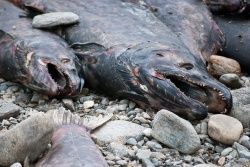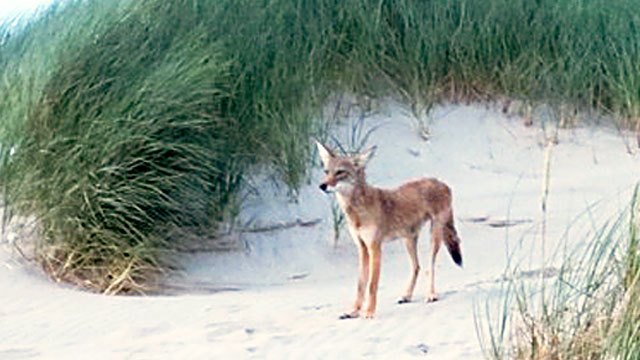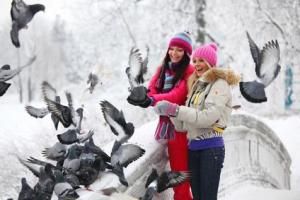
© Carol BrowneDead salmon in British Columbia (these ones died from natural causes).
Last month a virus
broke out in several open water salmon farms in British Columbia that has the region's fish farm owners scrambling to mitigate their losses. Called infectious hematopoietic necrosis (IHN), the rabies-like virus was found among salmon in floating net pens belonging to Mainstream Canada, the biggest producer in the region. As a result, B.C. farms culled over 500,000 fish infected with IHN, which spreads rapidly and can kill up to 100 percent of a fish farm's population. And it's just the latest disease scandal to hit the province's salmon farming industry.
Critics of the industry say that the farms should have seen this coming. Their own alarm bells have been ringing ever since Rick Routledge, a professor at Simon Fraser University, claimed that wild sockeye tested by his lab
in 2011 showed that another more serious virus, one that causes infectious salmon anemia (ISA), was present in B.C. waters. The government seized his samples and declared through their own testing that the virus was not present (since a verified case of the disease would be treated like other serious outbreaks such as mad cow disease under international convention, this would be devastating to the industry. In 2007, ISA caused a
$2 billion loss to the Chilean salmon farming industry, and was found to be imported on Atlantic salmon eggs shipped from Norway).
Diseases like these are suspected by First Nations, activists, and fishing groups to be one cause of the drastic declines among some wild salmon populations that the province has witnessed in recent years. Home to some of the biggest wild salmon runs in the world, B.C.'s provincial government has also welcomed the salmon farming industry eagerly over the years, allowing 100 farms to be established in its waters. But
activists charge that the open water pens are often located directly on the migration routes of wild salmon, where, as in the case of Chile, exotic diseases imported with the Atlantic salmon could multiply and spread into surrounding waters.


Comment: Interestingly enough, another case of snakes being "thrown from a helicopter" happened recently in Namibia.